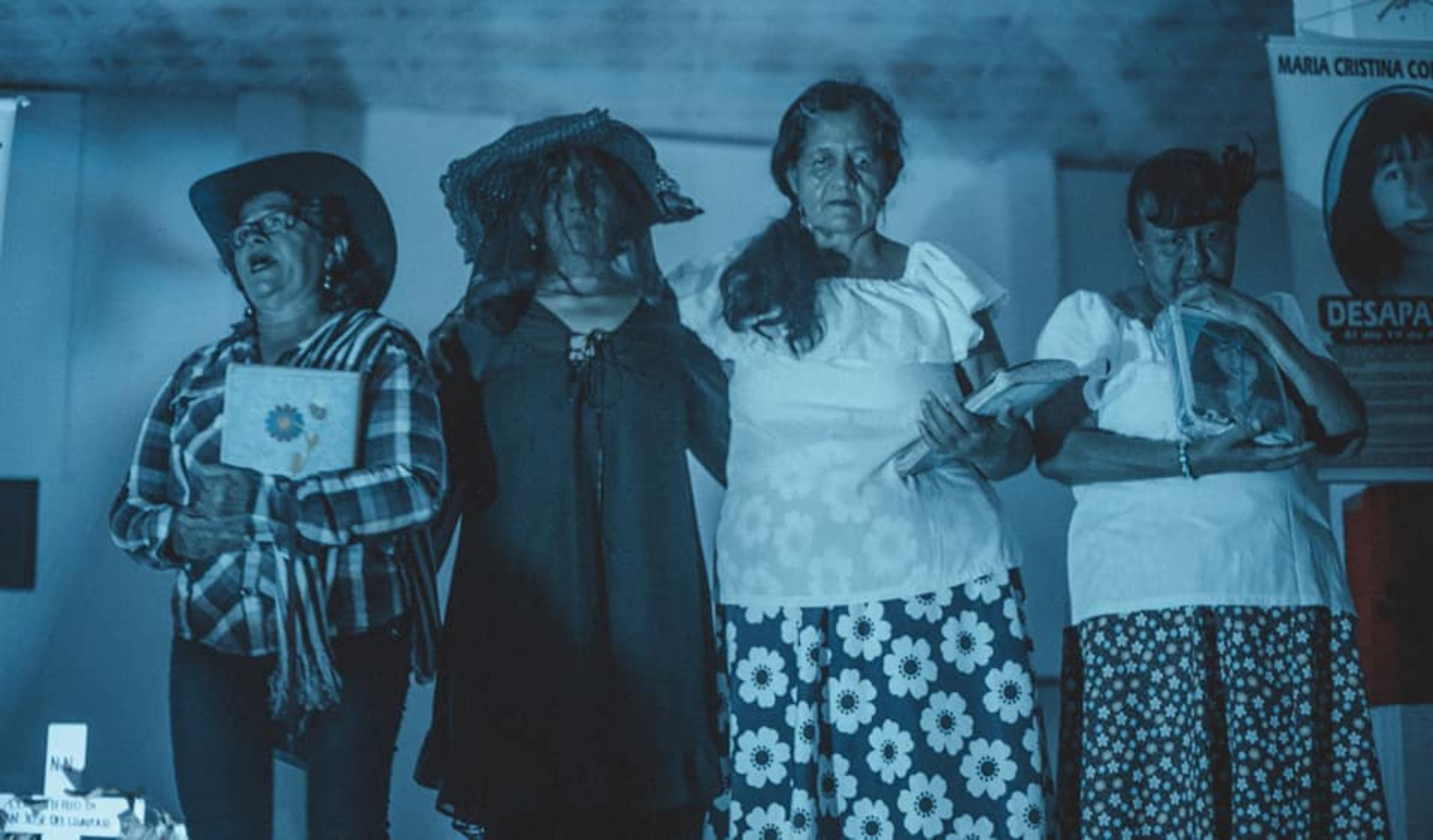“How many lives must disappear for these lands to stop bathing in blood? Asks a character dressed in black, with a veil over his face. A? Two? One thousand? Two thousand? Five thousand? Many, all, or how many more indiscriminate deaths, killed with mourners, with names and surnames?”. He kneels, cries out for justice. He is someone who is always close to war and pain. He asks why he must keep prowling to collect the footprints of the victims and the pain of the mothers. The work is just beginning and there is already anxiety in the place. For some, the woman in mourning represents ‘Death’. Behind the veil is Alicia León, a woman from Villavicencio (Meta), who since 2014 has joined other women to make art and memory.
Alicia leaves the stage, leaving the photographs on it, some clothes and plants that decorate the floor. She stays behind the scenes to accompany her companions and listen, once again, to their stories. Nidia Mancera talks about Deiber Castaño, her son, who disappeared in 2003 and who is still wrong; Carmen Mora remembers her husband, Silvio Tulio Romo, taken against his will by members of the B2 Intelligence Group, and Paulina Mahecha, expresses her desire to find the remains of her daughter Maria Cristina, murdered by the paramilitaries. They tell who that person was, what he did and what he was passionate about. Also about the day they disappeared, that last moment when they were seen alive and refused to forget. They demand answers to those questions that, despite the years, remain unsolved. Where are they? Why were they taken away?
The four are members of the El Tente Theater Group, made up of women from Meta and Guaviare, indirect victims of forced disappearance. Its name honors the homonymous bird, characterized by alerting to any disturbance and protecting children from any evil. It was also a response to the coverage and impunity of the Justice and Peace Law. Nidia, Carmen and Paulina met in 2011, in the training schools for relatives of enforced disappearance that created the Never Again project and the National Movement of Victims of State Crimes, Movice, in Meta.
Alicia joined the group years later, in 2014, when she participated in a call by the National Center for Historical Memory (CNMH) to strengthen some community initiatives. She entered as a replacement for a partner and embodies ‘La Muerte’. Over the years and the exhibitions, the character’s connotation changed. With the help of theater teachers, the members of the group decided that ‘Death’ would be someone reflective, who does not take life away but wonders how long he will witness the violence, barbarism and suffering. Alicia tells that death was not the one who took them; the murderers, in their words, “they are the people, the governments …”.
Before being one of the members, Alicia admired the work of ‘El Tente’. She was a follower of the group and felt familiarity in the stories of Nidia, Paulina and Carmen, because He is also an indirect victim of violence. In July 1987, his cousin Alberto disappeared.
– .


